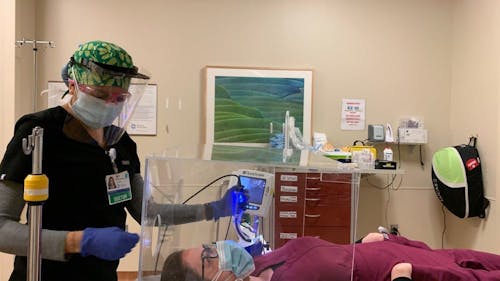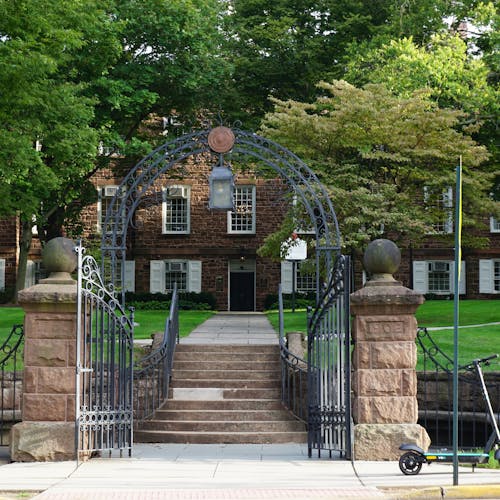Rutgers community uses 3D printing to make personal protective equipment during pandemic

Members of the Rutgers community are using 3D printing technology to create personal protective equipment (PPE), such as face shields and intubation boxes, for healthcare professionals during the coronavirus disease (COVID-19) pandemic, according to a press release.
The RU 3D PPE project consists of approximately 70 people from the School of Engineering, the School of Arts and Sciences, the School of Environmental and Biological Sciences, Robert Wood Johnson Medical School (RWJMS) and Rutgers New Jersey Medical School. Some of the participants are students from the RWJMS COVID-19 Innovation Task Force and staff from Rutgers Makerspace, according to the release.
The majority of the equipment is being made at the New Brunswick campus due to its 3D printing and laser cutting capabilities as well as availability of other tools, according to the release. Some of the face shields are being made in nearby labs with the legal and logistical help of staff at the Newark and Camden campuses.
The PPE can be sanitized and reused, according to the release. So far, approximately 180 shields have been distributed and members of the project hope to make approximately 500 shields per week by May.
Sacha Patera, associate vice president for Rutgers Corporate Engagement Center, said the team hopes to quickly and effectively produce the PPE in order to get it to healthcare professionals as quickly as possible, according to the release.
“Even in the assembly process, everyone is keeping proper social distancing precautions, wearing masks and gloves and keeping the number of people in the Makerspace and other spaces to a minimum,” Patera said, according to the release. “The shields themselves that are packed and assembled are disinfected and sanitized, so equipment delivered to hospitals is completely ready for use.”
Alejandro Alex Ruiz, associate director and University safety officer with Rutgers Environmental Health and Safety, said he is helping to decontaminate and distribute the project’s newly-created PPE to University Hospital, RWJBarnabas Health, Robert Wood Johnson University Hospital (RWJUH), as well as other hospitals not affiliated with the University.
“We want 80 percent of this PPE to go to protecting Rutgers employees, but we also want to make enough to keep as many frontline workers safe in the community as we can,” Ruiz said, according to the release. “The RU 3D PPE project works to create shields, but Rutgers also has efforts to create aerosol intubation boxes through a team of biomedical engineers.”
Robert Eisenstein, chair of the Department of Emergency Medicine at Rutgers RWJMS and chief of Ambulatory Services at RWJUH, asked the Department of Biomedical Engineering to try 3D printing intubation boxes, according to the release. These boxes are placed over a patient’s head and allow healthcare professionals to safely hook them up to a ventilator.
“Doctors performing this procedure, like emergency physicians and anesthesiologists, are at increased risk during this aerosolizing procedure, which can spread the virus further in the air. This puts them at the highest risk for contracting the virus,” Eisenstein said, according to the release.
Aaron Mazzeo, an associate professor in mechanical and aerospace engineering and a faculty fellow in the Rutgers—New Brunswick Honors College, and Jay Sy, a professor in biomedical engineering, helped create the first nine intubation boxes that were tested on mannequins at RWJUH and then used on patients, according to the release.
Mazzeo and Sy were assisted by the Department of Biomedical Engineering faculty, including Professor Troy Shinbrot, Professor and Chair David Shreiber and Assistant Teaching Professor Natalie Macon as well as postdoctoral associate Ramendra Pal, according to the release.
The boxes, which were originally produced at the Rutgers Makerspace location on the College Avenue campus, are now also being created at the Zimmerli Art Museum by Exhibitions Coordinator Keith Bull, according to the release.



